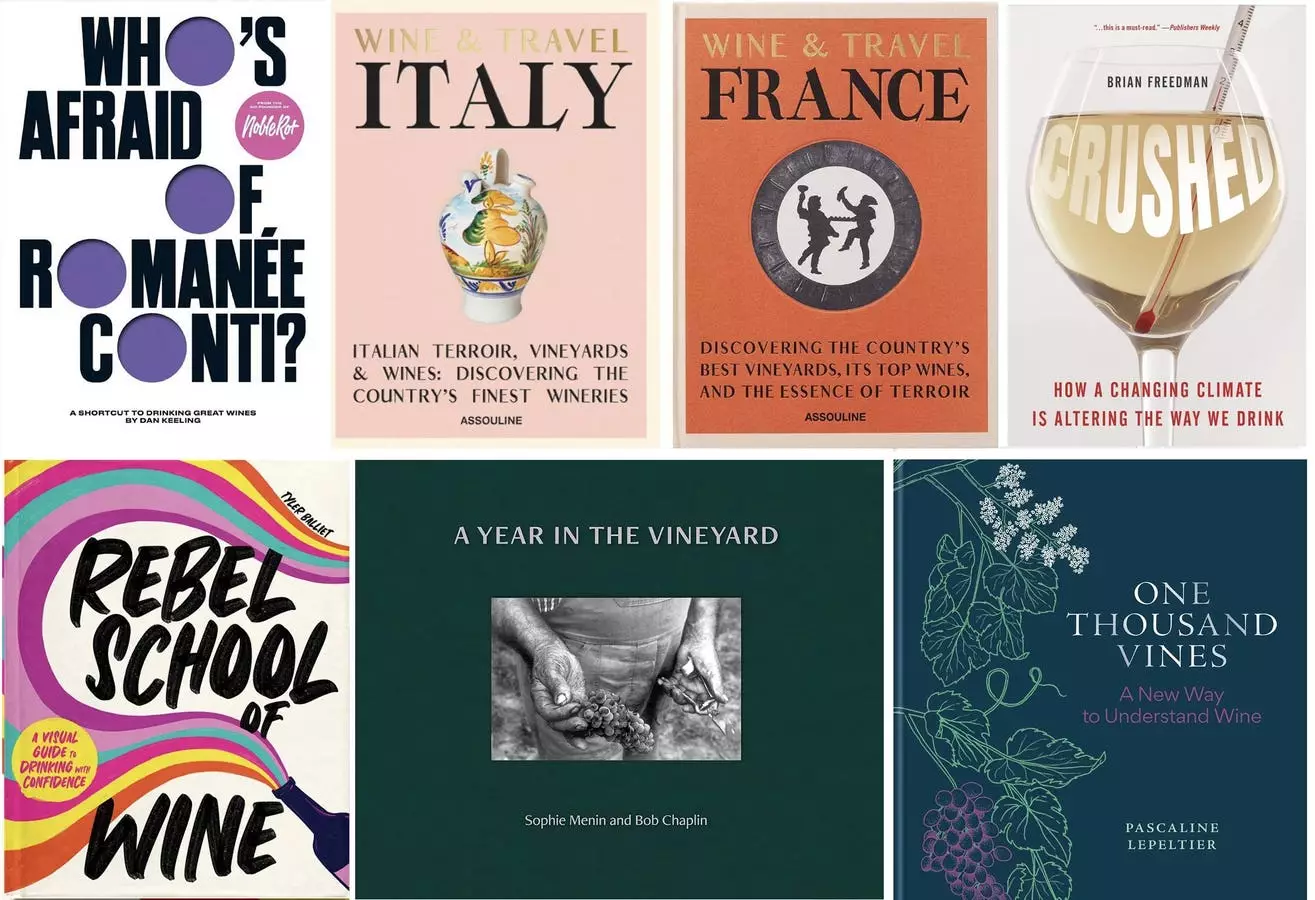Wine, often celebrated for its complexity and cultural significance, has found a new voice in literature, particularly in the realm of educational and travel narratives. The latest crop of notable wine books emphasizes not only the beauty of vineyards and varietals but also the intricate relationship between the environment and the wine industry. This article explores some of this year’s most significant wine publications, presenting a rich tapestry of knowledge and visual delight.
“A Year in the Vineyard” by Sophie Menin and Bob Chaplin offers a visually stunning meditation on the cyclical nature of viticulture. This coffee table book, adorned with breathtaking photography, captures the journey of vines from their dormant state to their rejuvenation and the ultimate preparation for winter. A hallmark of this book is its deep connect with the farming ethos, encapsulated in a thoughtful Japanese proverb featured at the beginning: “The footstep of the farmer is the best fertilizer.” This acknowledgment of agricultural roots shows an appreciation for the labor and love that goes into vine cultivation.
In addition to familiar vineyard imagery like horse-powered farming in Burgundy and sun-kissed rows of grapes, the authors take readers on a broader journey. They explore the unique landscapes of Lanzarote and Santorini while addressing pressing issues like climate change and its impact on viticulture. This juxtaposition of beauty with an urgent narrative creates a compelling reading experience that encourages readers to understand the delicate balance between nature and viticulture.
The travel guides “Wine & Travel France” and “Wine & Travel Italy,” both written by Michelin-starred restaurateur Enrico Bernardo, provide a sumptuous exploration of wine culture in two iconic nations. Each book navigates through various wine regions, combining culinary delights and stunning scenery into a rich tapestry celebrating the oenophile lifestyle. Bernardo, a celebrated sommelier, infuses personal insights and recommendations, providing a roadmap for readers eager to embark on their own wine adventures.
The structural coherence of these two guides is particularly notable, as they both encompass the gastronomic experiences tied to wine. The detailed glossaries serve as invaluable resources for novices and seasoned enthusiasts alike, allowing them to deepen their knowledge and appreciation of the diverse terroirs that characterize French and Italian wines.
Pascaline Lepeltier’s “One Thousand Vines: A New Way to Understand Wine” aims to redefine how we interact with wine, using alluring illustrations and a clear structure. This book separates itself into three categories: Reading Vines, Reading Landscapes, and Reading Wines. Each section educates readers about viticulture, terroir, and tasting, positing that wine can act as a reflection of our culture and civilization.
Lepeltier’s exploration of wine threats, including commodification and aesthetic degradation, is an essential reminder of the tensions embedded in the production and appreciation of wine. This perspective not only informs but also inspires readers to consider their choices and the broader implications on culture and consumption.
Dan Keeling’s “Who’s Afraid of Romanée-Conti?” presents a humorous, yet insightful dive into the world of wine without pretension. This guide serves as an approachable entry point for those intimidated by the ostentation often associated with wine culture. Keeling emphasizes discovery over exclusivity, spotlighting less recognized yet equally exquisite producers from various regions. This narrative is complemented by energetic photography that evokes a sense of playfulness and curiosity about wine.
Moreover, “Rebel School of Wine,” with its colorful aesthetics and relatable approach, caters specifically to the younger demographic who may feel daunted by traditional wine literature. Through engaging design and relatable terminology, this book empowers a new generation of wine enthusiasts to approach wine with confidence and curiosity.
In “Crushed: How a Changing Climate is Altering the Way We Drink,” journalist Brian Freedman adopts a more somber tone as he navigates the pressing challenges posed by climate change. This book serves as an essential wake-up call, detailing how shifting environmental conditions can drastically reshape regions once considered unsuited for winemaking. Freedman’s examination of specific case studies—from the emergence of English sparkling wines to the devastation caused by unexpected frost—illustrates not only the fragility of the wine industry but also its resilience.
This critical discourse leaves readers with a sense of urgency regarding sustainability in wine production. Understanding the direct impact of climate change on varietals and landscapes encourages a more thoughtful approach to consumption—one that underscores the interconnectedness of wine, culture, and the environment.
The year’s notable wine books offer a fascinating blend of education, exploration, and reflection. They encourage readers to appreciate wine not just as a beverage but as a cultural artifact shaped by history, geography, and environmental shifts. As the wine world continues to evolve, so too does the literature that captures its essence, beckoning both novices and connoisseurs to engage with the vines, landscapes, and stories behind their favorite bottles.

